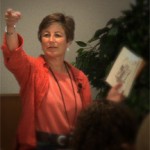
Victoria J. Plettner-Saunders
Welcome to the Blog Salon
Posted by Mar 14, 2011

Victoria J. Plettner-Saunders
As Chair of the Arts Education Council of Americans for the Arts, I’d like to welcome you to the first Arts Education Blog Salon of 2011.
There are always so many things to learn from our colleagues as we share blog posts and commentary on a particular theme for one full week.
I hope you have time to return to the Salon several times throughout the week (and again after it ends on Friday) and post your own thoughts or questions as they arise.
I also wanted to take this opportunity to share with you a little bit about the Arts Education Council and what our agenda for 2011 looks like.
This past January, the council met to plan its annual agenda. With a renewed focus on supporting members at the local level, we developed a rather ambitious set of activities for the year around five main themes (some of which were the result of the council’s Trends Report that has been developed over the past two years).
Read More













